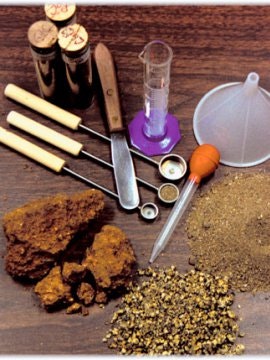Soil Testing
Are you planning a new yard or garden, or do you suspect that your soil may be causing poor plant growth? Consider having your soil analyzed by the RCRCD. Soil tests may reveal chemical problems that are invisible to the eye, but that are negatively impacting the vegetation.
The RCRCD provides low-cost soil testing for private landowners and homeowners, per Divison 9 of the California Public Resources Code Article 1 Policy 9001 Section B Article 4. Once testing is complete, results will be provided in a soil report as well as any recommendations for soil amendments.
Due to staffing shortages, tests are taking up to three weeks to complete. Sorry for any inconvience this may cause and thank you for your patience.
Basic soil test:

- Nitrate-Nitrogen (NO3-)
- Phosphorus (P)
- Potassium (K)
- pH
- Salinity (EC)
- Soil texture
Costs:
In District
Basic Soil Test: $20
Cash or Check only
Soil Testing in district_2025.pdf
Out of District
Basic Soil Test: $50
Cash or Check only
Soil Testing out of district_2025.pdf.png?ixlib=rb-1.1.0&w=2000&h=2000&fit=max&or=0&s=cbfaffb7969af7f255d651a621cd86b5)
Rush Orders
Ten working days are required to complete tests and write the report. There is an additional charge of $10.00 for results needed sooner for samples taken within the District, and an additional charge of $25 for samples outside of the District.
Collection Techniques
Soil

For accurate soil testing, collect a sample that is representative of the entire growing area. Avoid sampling unusual areas such as bare or wet areas, near compost piles or other impacted areas. Collect soil from several locations in the growing area and combine the samples. Chemicals from your skin or dirty containers may alter test results. Use rubber gloves or plastic bags over your hands, and residue-free plastic or glass containers to collect and mix soil. Use a shovel, trowel or probe to collect soil samples.
For each area to be tested:
- Clear 4 to 10 small sampling areas; remove plants, rocks, plant debris.
- Dig a small hole in each cleared area using a shovel or trowel. Depth of hole: 4" for turf, 12" for trees/large shrubs at or within drip line, 6" for flower beds, shrubs, vegetables.
- Cut a ½-inch thick vertical slice from the surface to the bottom of the hole. From each shovel slice of soil, cut a 1-inch wide vertical core. When using a cylindrical tool, such as a soil probe or hollow curtain rod, simply take a 1-inch core from the surface down.
- Place the samples together in a clean plastic pan or bag. Thoroughly mix together the samples from the area, breaking up clods and removing rocks, roots, leaves, sticks and plant debris. Place at least one cup of the mixture into a plastic bag or non-metal container. If the soil is too wet to mix, spread it to air-dry first.
- Label each combined sample with name, date, and area, such as vegetable garden, side lawn, fruit trees.
- Please provide information about special problems of the area, depth of sample, and the plants that grow, or are planned for the area.
Submitting Soil for Testing
Option 1: Drop-off
Staff will happily accept your soil samples at our main office, 4500 Glenwood Dr. Riverside, CA 92501 Bldg A
Staff are available Monday thru Friday 8am to 4pm. Please have cash or check at time of drop-off.
Option 2: Mailing samples
Mail your samples to:
Riverside-Corona Resource Conservation District
4500 Glenwood Dr. Riverside, CA 92501 Bldg A Attention: Soil Testing
When mailing samples please include your payment via check. Checks should be made out to Riverside-Corona RCD.
For further information please contact Resource Conservation Technician Alicia Ruan at ruan@rcrcd.org



